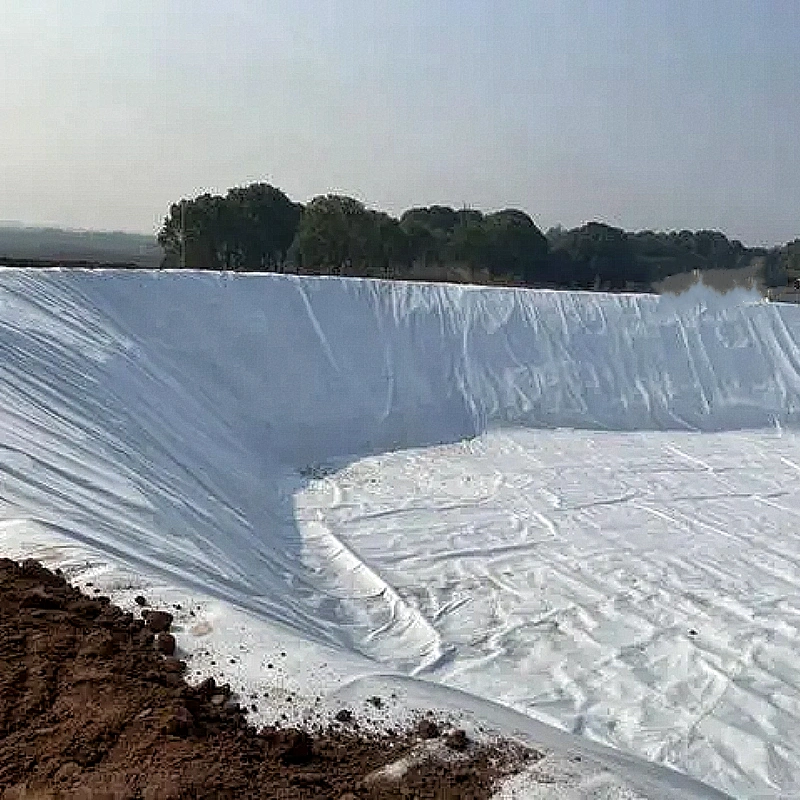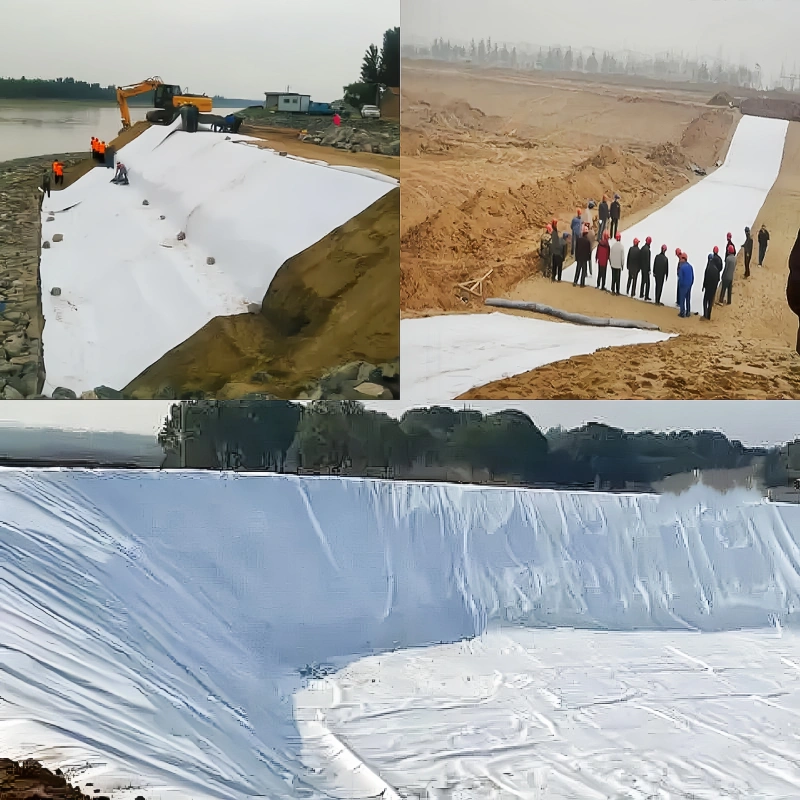Erosion on slopes poses a significant threat to soil stability, vegetation, and overall environmental health. In the realm of civil engineering and soil management, geotextiles have emerged as a powerful solution for combating slope erosion. These synthetic materials, available in various forms and specifications , play a crucial role in stabilizing slopes, preventing soil loss, and promoting sustainable land use.

What is slope erosion control?
Erosion control on slopes is an engineering or land management practice designed to slow or prevent soil erosion on slopes. Slope erosion is usually caused by rainfall, surface runoff, wind, and other environmental factors, which can lead to soil loss and affect vegetation and terrain stability. The goals of slope erosion control are to protect soil, maintain topography, and prevent potential landslides or slope failures.
The choice of slope erosion control method depends on the specific terrain, climate, soil type and project requirements. Before implementing erosion control measures, it is best to consult with a professional civil engineer or erosion control expert to ensure that the chosen method complies with local conditions and standards.
Understanding Geotextiles
Geotextiles are engineered fabrics designed to address soil-related challenges in construction and environmental projects. In the context of erosion control on slopes, geotextiles act as a protective barrier, offering support to the soil structure and mitigating the impact of water flow, rainfall, and other erosive forces.
Choose the right specification
Choosing suitable specifications is the key to ensuring the quality of non-woven geotextile projects for river slope protection. The following factors need to be considered
Engineering requirements: Choose the appropriate thickness and weight according to the specific engineering requirements. Generally speaking, thicker non-woven fabrics are required for slope protection and filling projects.
Soil type Choose the appropriate non-woven geotextile according to different soil types. For example, for clay geology, you can choose non-woven geotextiles with good permeability resistance
Slope protection height Select the appropriate width according to the height of the slope protection. . Generally speaking, when the slope protection height is greater than 3m, you need to choose non-woven fabric with a larger width.
Non-woven geotextile can effectively prevent soil erosion and inhibit river erosion. Its common specifications are as follows
Thickness 1.2mm 2.5mm 3.3mm 4.2mm
Width 1m 2m 3m 4m 6m
Weight 150g/m2-800g/m2
Color white, black or customized color.
Roles of Geotextiles in Slope Erosion Control
Reinforcement and Stability: Geotextiles provide crucial reinforcement to slope surfaces, enhancing their stability and resisting the forces that contribute to erosion. The materials used, such as polypropylene or polyester, are selected for their strength and durability.
Filtration and Drainage: Geotextiles serve as effective filters, allowing water to pass through while retaining soil particles. This dual functionality helps in preventing soil erosion while facilitating proper drainage, reducing the risk of surface runoff.
Vegetation Support: Geotextiles create an environment conducive to vegetation growth on slopes. By stabilizing the soil and preventing erosion, they offer an ideal substrate for the establishment and growth of plant life, contributing to sustainable landscaping.
Applications of Geotextiles in Slope Erosion Control
Slope Stabilization
Geotextiles are extensively used for stabilizing slopes and embankments. Whether in highway construction or landscape management, these materials play a critical role in preventing landslides and maintaining the integrity of sloped surfaces.
Erosion Control Blankets
Geotextile blankets, often combined with natural fibers or synthetic materials, are deployed to cover disturbed areas. These blankets not only prevent erosion but also promote vegetation growth, making them valuable in reclamation projects.Coir Mats
Coir mats, a type of geotextile made from coconut fibers, are particularly suitable for slope erosion control. These biodegradable mats offer a natural solution while effectively stabilizing soil and preventing erosion.Underlayment for Riprap
Geotextiles serve as underlayment for riprap and other erosion control measures. By providing additional support and stability, they enhance the effectiveness of protective layers on slopes.

How to use Geotextiles to solve slope erosion?
The use of Geotextiles to address slope erosion is a common civil engineering approach. Geotextiles can be used to provide additional support, stabilize soil, and prevent water erosion on slopes. Here are the general steps for using Geotextiles to address slope erosion:
1.Assess slope conditions
A detailed assessment of the slope is required before selecting appropriate Geotextiles and design solutions. This includes considering factors such as the slope of the slope, soil type, flow patterns, precipitation, and more.
2.Selecting the Appropriate Geotextiles
Select the appropriate type, weight and specification of Geotextiles based on the characteristics of the slope and project requirements. Typically, properties such as tensile strength, permeability, and UV stability of Geotextiles need to be considered.
3.Clean and prepare the slope surface
Before laying Geotextiles, make sure the slope surface is clean, smooth, and clear of any vegetation or debris. This helps Geotextiles bond well with the soil surface.
4.Laying Geotextiles
Lay Geotextiles on the slope surface, making sure to cover the entire area that needs protection. If it is a large area of slope, use multiple rolls to cover, making sure they overlap to provide long-lasting protection.
5.Installation and fixing measures
Use fixings such as nails, spikes or other ground fixing systems to ensure that Geotextiles adhere tightly to the slope surface and prevent them from moving due to water flow or other environmental influences.
6.Vegetation or other coverings
Plant vegetation over Geotextiles, or add other protective coverings such as turf, lawn mulch, wood chips, etc. to provide extra protection and stability.
7.Maintenance and Monitoring
Regularly inspect Geotextiles systems on slopes to ensure their effectiveness and perform necessary maintenance. This may include repairing or replacing damaged Geotextiles, dealing with vegetation growth, and clearing any obstructions in the path of water flow.
The role of geotextiles in slope erosion control mainly includes providing support, preventing soil erosion, promoting vegetation growth, and slowing down water flow. When implementing these measures, it is recommended to work with a civil engineer, geologist, or erosion control specialist to ensure that the materials and methods selected are appropriate for the specific environmental conditions and project requirements.
Geotextiles have proven to be a versatile and effective solution for addressing slope erosion challenges. Whether applied in road construction, landscaping, or environmental restoration, these engineered materials contribute significantly to the protection of slopes, soil conservation, and the promotion of sustainable land use practices . As we navigate the complexities of modern construction and environmental management, geotextiles stand out as a valuable all in the quest for erosion control and slope stability.

897.webp)
942.webp)
237.webp)